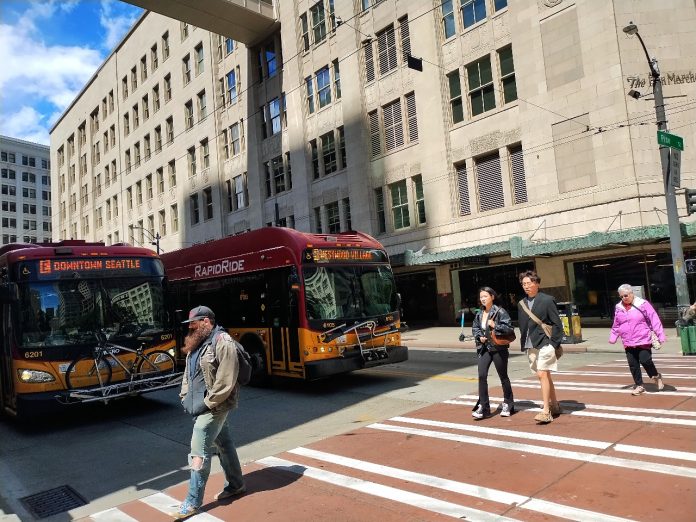
Next week, council is set to put a $1.55 billion levy on the ballot, after a push to go bigger failed to gain traction.
The final size of Seattle’s next transportation levy was set Tuesday by a Seattle City Council committee, with nearly all councilmembers supporting a $1.55 billion package, but all but two rejecting the idea of going any further. Major additional amendments aren’t expected at next week’s final vote as the proposal heads toward a November vote, following two months of council deliberations to arrive at this point.
This proposed property tax levy represents the first major piece of legislation that this city council, made up of six brand new members, has accomplished to date. By and large, the bulk of the levy looks like it did in May when Mayor Bruce Harrell transmitted a $1.45 billion levy to the council for consideration.
Following the mayor’s blueprint, $423 million would be spent on repaving projects across the city, and another $221 million to maintain and upgrade the city’s bridges $100 million would go to signal upgrades, and $66 million to “people streets and public spaces,” a new category of spending that includes both pedestrian lighting and wayfinding but also placemaking. $70 million will go toward Vision Zero funding, an amount that was left untouched by council despite rising traffic fatalities and serious injuries across the city.
The biggest area where the council collectively made its mark is around sidewalk funding. A combined $145 million will go toward new sidewalks and the repair of existing ones, an increase of over 75% compared to the amount initially proposed by the Mayor. The baseline commitment to expand Seattle’s sidewalk network — which is missing over 18,000 blocks or 27% of the city’s total — now stands at 350 blocks through 2032, though this does represent a walk back of an earlier commitment to build 500 blocks within five years, a number that the Seattle Department of Transportation (SDOT) contended was impossible to achieve given the amount allocated and existing constraints in project delivery.
Freight and industrial business advocates also saw a victory with an addition of $20 million in funding, nearly doubling the amount to be spent on projects that better enable the movement of trucks and improve access to the city’s industrial zones. That was a primary public request from the Seattle Metropolitan Chamber of Commerce, along with asking for the size of the levy to stay modest.
For months, transportation safety advocacy groups have been urging the city to go bigger, pointing to both internal and independent polling that showed strong support for a levy that makes more investments in areas. But the council rejected an amendment Tuesday, proposed by Councilmember Tammy Morales, that would have added an additional $150 million, or just under $20 million per year, to specifically fund projects the entire council had identified as priorities without having to subtract funding from somewhere else. But in the end, only Cathy Moore joined Morales in supporting that amendment, with Dan Strauss abstaining from the vote.
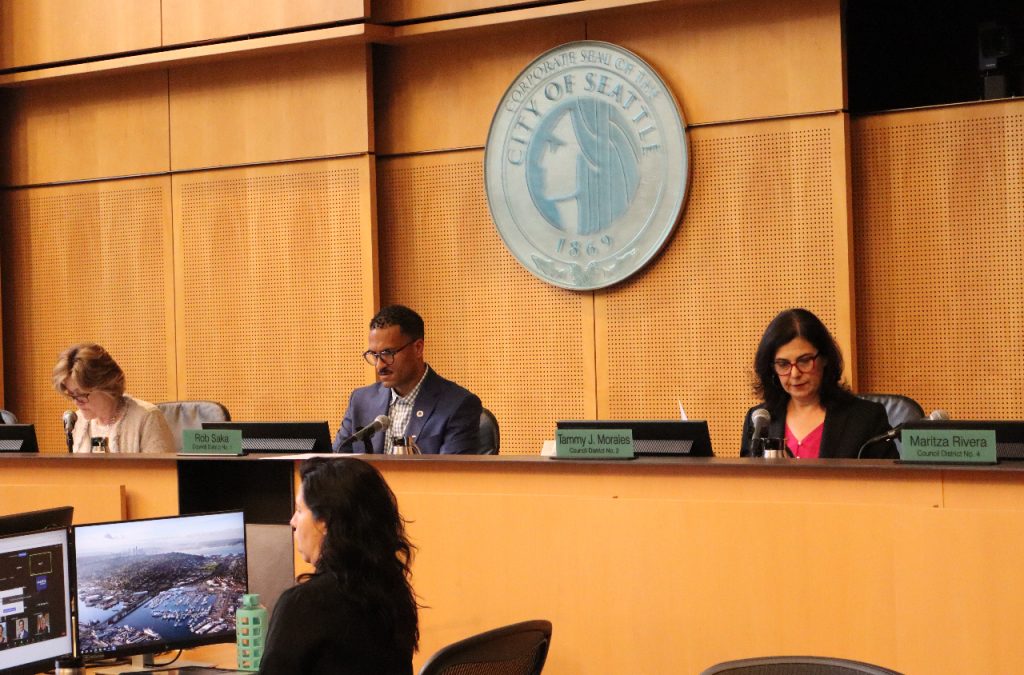
Morales started remarks on her amendment by reading the names of people who have been killed in traffic violence so far this year, a list that did not yet include the name of a motorcycle rider who did not survive a crash on Aurora Avenue late Monday night.
“We can’t afford to wait to be bold in our vision of what Seattle streets could look like. Lives are quite literally depending on it every day,” Morales said. “I know this is a big ask. I think we’ve all demonstrated our commitment to keeping our neighbors safe, and I ask for your support on this amendment.”
But in arguing against the increase, many councilmembers said that going any further would push the tax burden into the realm of the unaffordable, even as Morales’s amendment would have only increased the amount due yearly for the owner of a median-value home in Seattle by $48. Overall, the owner of a median-valued Seattle home assessed at $804,000 would pay an estimated $520 a year under the $1.55 billion levy.
Opponents also argued that a $1.7 billion levy would face stronger headwinds in November, despite the favorable polling. The levy will be sharing the ballot with high profile elections including U.S. President, when turnout is traditionally at its highest. In 2015, the last transportation levy, dubbed Move Seattle, faced an off-year ballot and a concerted opposition campaign and prevailed by more than 17 points.
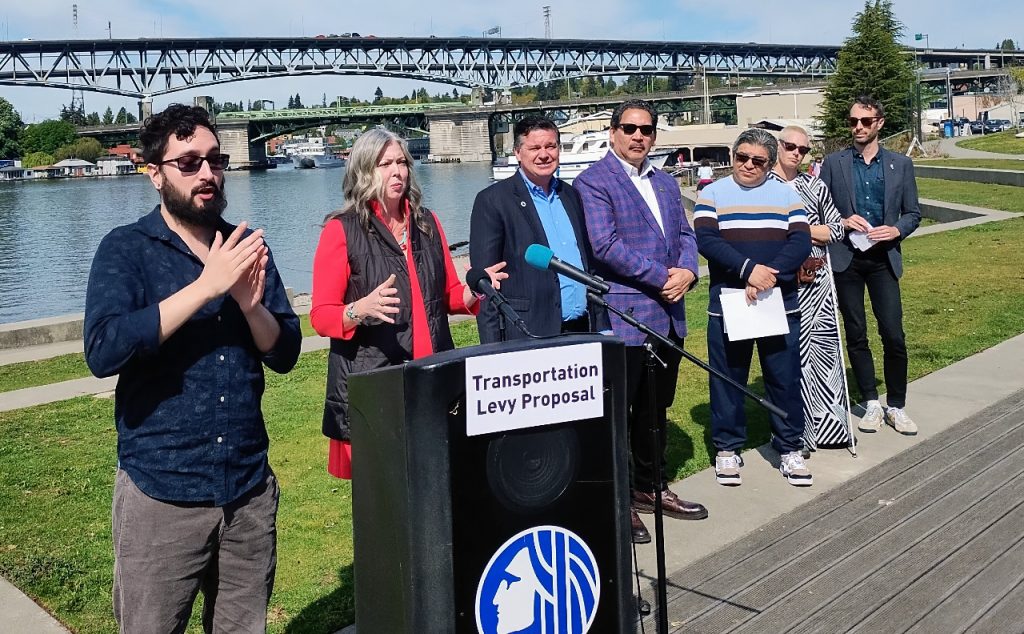
Council President Sara Nelson argued that public polling that showed strong support did not take into account the cumulative impact of increased property tax levies and other cost increases, suggesting Seattleites are not aware of their own tax burden. Seattle voters have not rejected a citywide tax levy in decades.
“These polls, whenever they’re put before the voters, or likely voters, no matter what the ballot measure, be it housing or parks or transportation, never really tells never really tells the voters how much they’re already paying in an aggregate based on the cumulative increase of each of our levies,” Nelson said. “My vote is not a vote against Vision Zero, against safety, clearly that is important.”
The proposal heading to next week’s final vote does include a number of amendments suggested by councilmembers, most of which were approved with one single vote in which there was little discussion about individual elements. One amendment diverted $500,000 from the Mayor’s proposed budget for protected bike lanes to fund a study on potential lids over I-5 in the U District and around N 130th Street Station. Councilmember priorities like a neighborhood greenway on 6th Avenue NW (Strauss), an intersection upgrade at Roosevelt Way N and N 137th Street (Moore), protected bike lanes on 12th Avenue S (Hollingsworth), and a Vision Zero project on Rainier Avenue S (Morales) were all included. However, with a few exceptions, the amendments mostly just earmarked existing funds for specific projects.
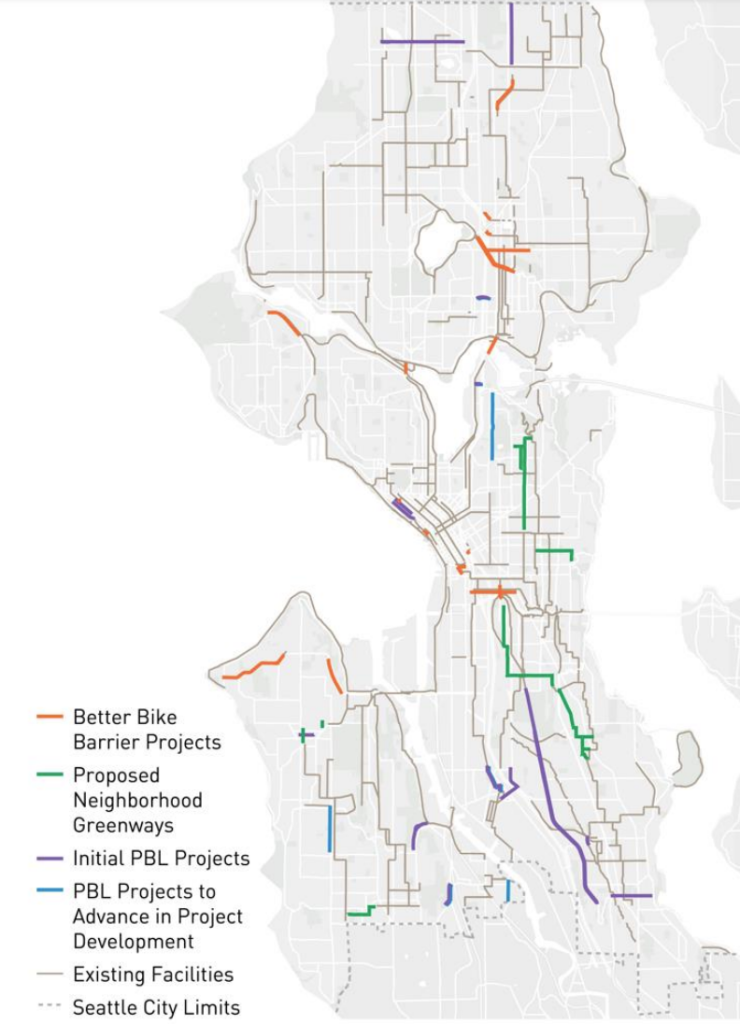
Saka even went so far as to amend the levy to include a new protected bike lane in his West Seattle district to be named after Steve Hulsman, a cyclist who was killed by a driver last December on Marine View Drive SW. However, without adding any additional funding for bike lanes, it’s unclear if other projects will now have to be cut from the levy given that new unfunded mandate. The Mayor’s proposal only funded 10 miles of additional protected bike lanes after Move Seattle promised 50 miles and has delivered around 40.
The council ultimately rejected a suite of amendments from Councilmember Dan Strauss to fund several major priorities in his Northwest Seattle district, including one that would have diverted $20 million in repaving funds to connect the Missing Link of the Burke Gilman on Leary Way and Market Street, and another that would have diverted $5 million in sidewalk funding to pay for a “curbless” revamp of the Ballard Avenue cafe street.
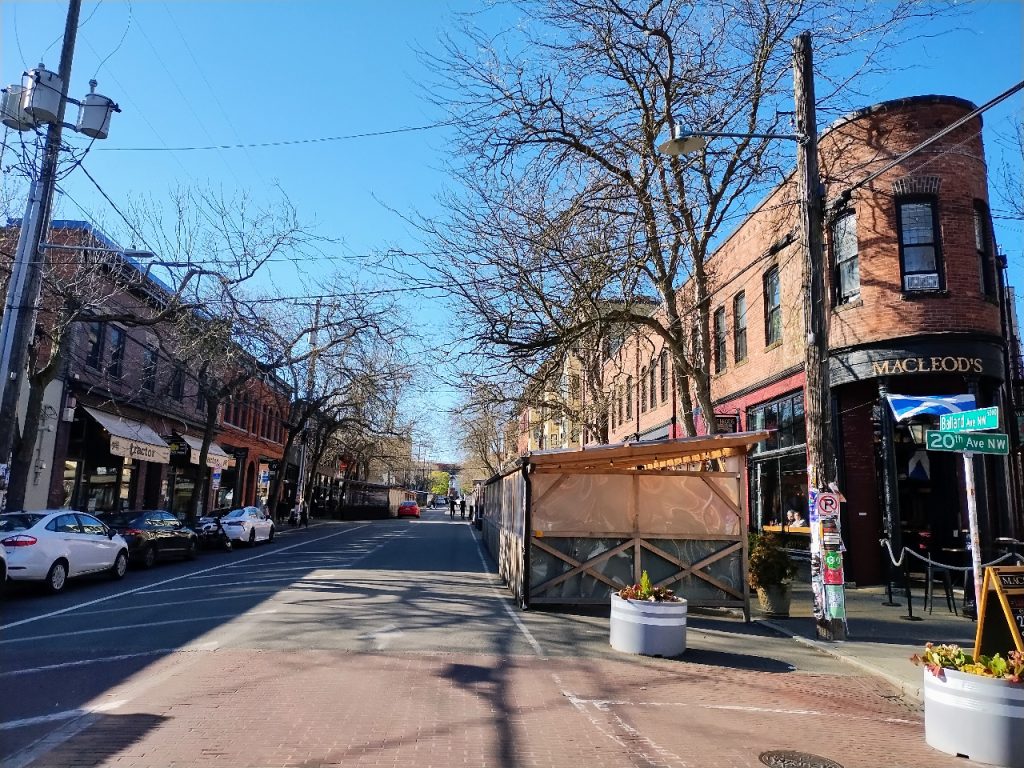
The biggest standalone amendment that was approved was a proposal from Councilmember Morales to eliminate a fund designated for district councilmembers to select their own transportation priorities. Instead $14 million will be directed to a new Neighborhood-Initiated Safety Partnership Program, intended to empower communities that might not normally have a seat at the table when it comes to transportation projects. The amendment only passed after both Council President Nelson and Councilmember Maritza Rivera abstained from voting, with chair Rob Saka voicing extreme skepticism of the idea of diverting the funding to a new program. Saka was joined by Bob Kettle and Dan Strauss in opposing the amendment.
“We can’t just slap the word equity or community on something and just expect that it’s going to yield, immediately, equitable or community-driven results,” Saka said, after calling the proposed program a “slush fund,” an assertion that brought pushback from SDOT Director Greg Spotts. Under the now-eliminated funding for District Projects, it would have been elected councilmembers and not the transportation experts at SDOT who would have been tasked with making decisions around which projects to fund, a task which has not previously been under their control, making it much more like a slush fund.
Overall, Saka touted the proposal ultimately voted out of the committee by an 8-0 vote, with Dan Strauss abstaining. Strauss appeared upset his amendments were rejected, but did not make comments before the final vote.
“I’m delighted by the final package, because it reflects a citywide view and all of us can claim credit, and it does center safety investments, for the whole city. And this is something to be excited about, and rally around, and unite, because 30% of SDOT’s budget is the levy, and if it doesn’t pass…let’s just say it’d be catastrophic,” Saka said. “Jobs are on the line, the city’s ability to perform essential services, on the line. I don’t want to talk about that because I think where we’re landing directionally is putting together a package that we can all be excited about, we can all rally around, but ultimately voters are going to decide on.”
Ryan Packer has been writing for The Urbanist since 2015, and currently reports full-time as Contributing Editor. Their beats are transportation, land use, public space, traffic safety, and obscure community meetings. Packer has also reported for other regional outlets including Capitol Hill Seattle, BikePortland, Seattle Met, and PubliCola. They live in the Capitol Hill neighborhood of Seattle.


